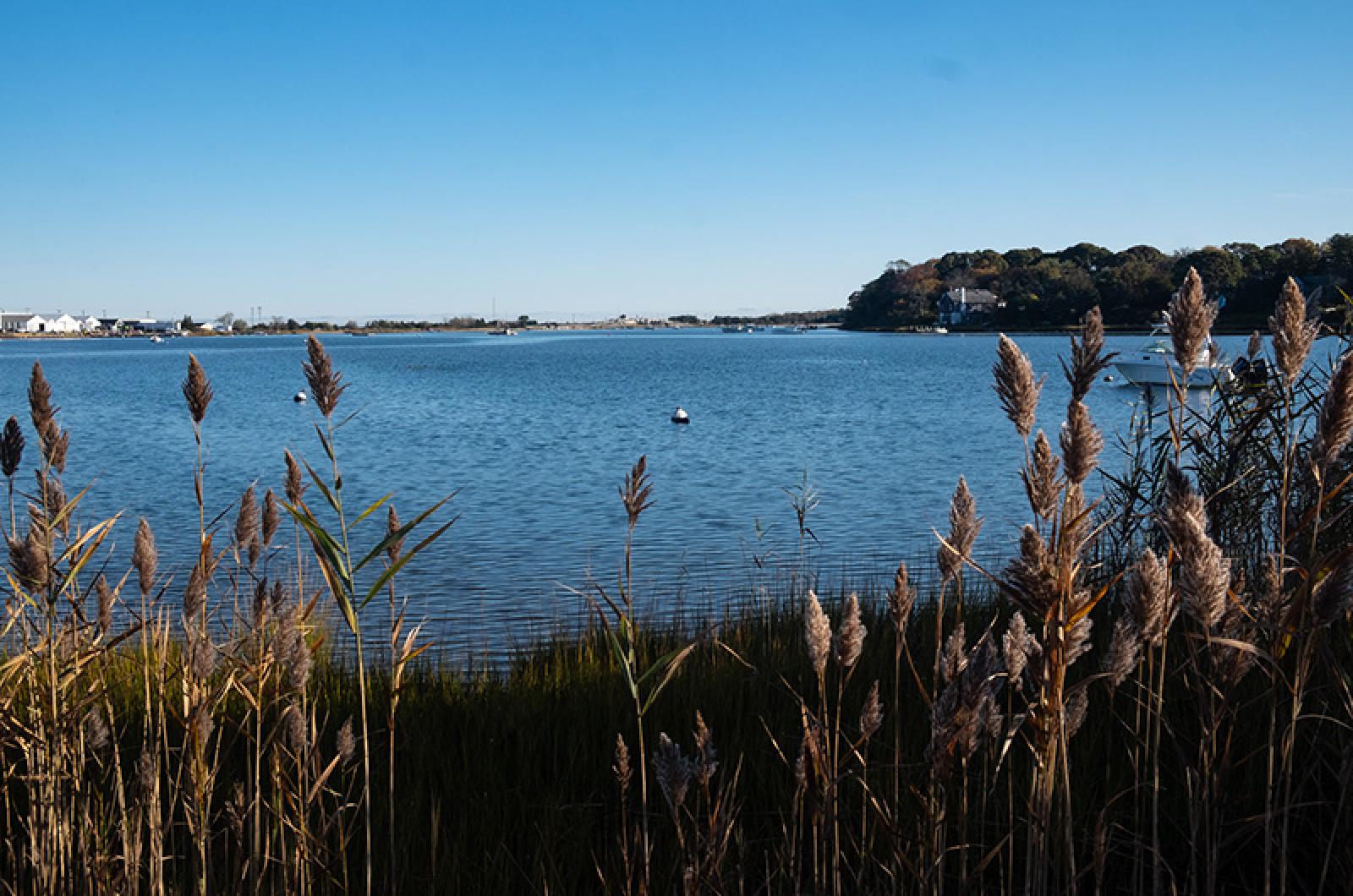The Lagoon Pond is the second largest estuary on Martha’s Vineyard and the most impaired of all the Island’s ponds. Water quality and resulting habitat and aquatic life have been severely degraded, primarily by excess nitrogen entering the watershed. Excess nitrogen causes an overabundance of algal growth which severely depletes oxygen levels. This condition prohibits most life from surviving below 1.5-feet deep and has caused eelgrass to all but disappear from Lagoon Pond.
Eelgrass is essential to supporting shellfish and other marine life. It also captures and stores CO2 pollution at much higher rates than forests and prevents coastal erosion. Bay scallop, winter flounder and other ground fish populations have been depleted due to the loss of eelgrass.
The sources of nitrogen and the assimilative capacity of Lagoon Pond have been studied extensively. Based on a study by the Massachusetts Estuaries Project in 2010 (as updated), the amount of nitrogen from the watershed is currently known to be 35 per cent above the Total Maximum Daily Load.
Total Maximum Load is the limit that Lagoon Pond can safely tolerate of this specific pollutant. The sources of controllable nitrogen pollution in Lagoon Pond are 76 per cent septic wastewater, 16 per cent fertilizers and impervious surfaces (road runoff), and 8 per cent from farming. Controllable nitrogen is mostly from private homes and their associated infrastructure located within the watershed of Lagoon Pond.
To address the negative impacts to ponds and embayments of excess nitrogen, the Massachusetts Department of Environmental Protection recently proposed regulations that municipalities will be required to adopt to achieve the Total Maximum Daily Load for watersheds within their boundaries. While these proposed regulations excluded the Islands for now, we still need to begin making significant changes to mitigate excess nitrogen. Town governments are in the process of creating comprehensive waste management plans, which include additional sewering plans, revised septic regulations and other methods of reducing nitrogen from watersheds.
Sewering is only feasible in small pockets of the Island where home density is high. Since Title V septic systems and cesspools are ineffective at removing nitrogen, the Massachusetts Department of Environmental Protection also proposed regulations for private septic systems that remove nitrogen. Collectively, these new systems are referred to as Innovative/Alternative (I/A) septic systems and can remove more than 90 per cent of nitrogen from wastewater and often can be retrofitted to current Title V systems. Other means of decreasing nitrogen include reduction of fertilizers on lawns and farmland, installing permeable reactive barriers on appropriate sites, and reducing road runoff.
There are several ways that Islanders can help improve Lagoon Pond, as well as other ponds on the Island. Advocate for the water quality that improves aquatic life and habitat of Island ponds and support nitrogen-reducing projects such as aquaculture, eelgrass restoration and vegetative berms to control runoff. Reduce or eliminate fertilizer use on your lawn. If your home is in a pond watershed, and virtually every lot on the Island is in a watershed of one of the Island’s ponds, consider retrofitting or replacing your septic with an innovative/alternative system. Support town government efforts to develop and implement the comprehensive waste management plan and other regulations that will reduce nitrogen for Lagoon Pond and other Island ponds. These plans can take up to 20 years to implement, however, the quality of life in and around the pond in the meantime is continuing to degrade, so it is important for citizens to do whatever is within their means to do as soon as feasible.
What is the nitrogen “math” for Lagoon Pond? The annual Nitrogen Total Maximum Daily Load of Lagoon Pond is 55,500 pounds (27,500 kilograms). The average Lagoon household (2.3 persons) generates 11 pounds of nitrogen pollution/year. To decrease nitrogen to the Total Maximum Daily Load target of 55,500 pounds, approximately 1,100 houses in the Lagoon Pond watershed will need to install an Innovative/Alternative septic system or otherwise stop releasing nitrogen to the groundwater. The federal government, Martha’s Vineyard Commission and other entities are providing funds to help with the cost of upgrading septic systems for townspeople who can’t afford the cost.
The Lagoon Pond Association is working to restore the Lagoon’s water quality and biodiversity by collaborating with Oak Bluffs and Tisbury town departments, businesses around the pond and other environmental groups, as well as spreading the word regarding the nitrogen issue and the importance of improving our septic systems.
Becky Rivera and David Reed are on the board of the Lagoon Pond Association.




Comments (1)
Comments
Comment policy »